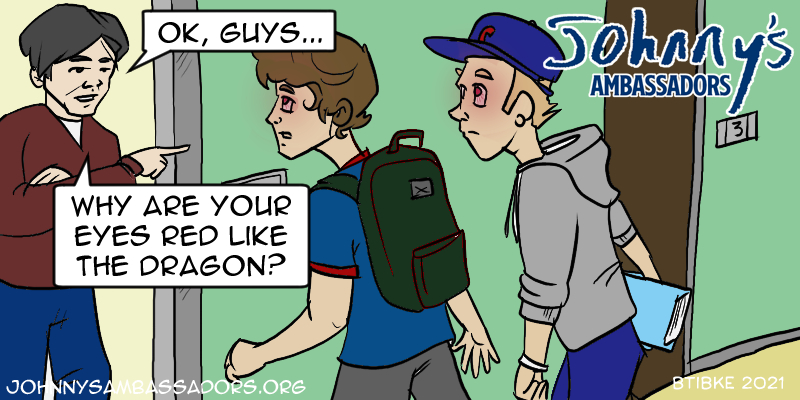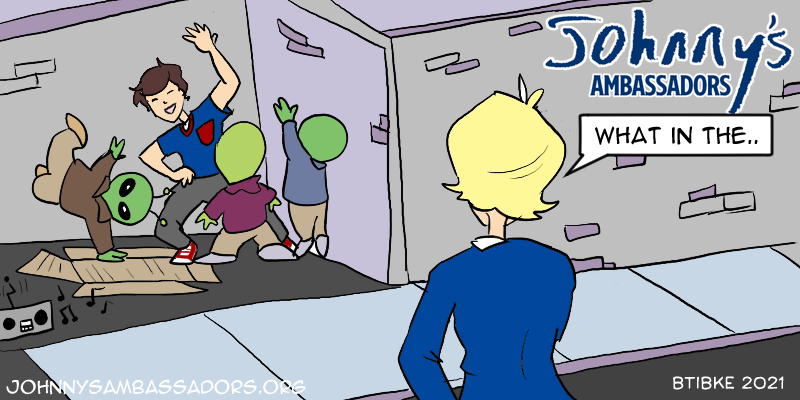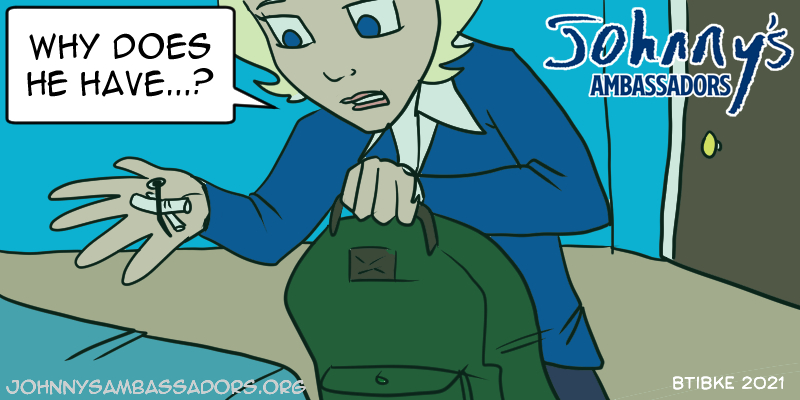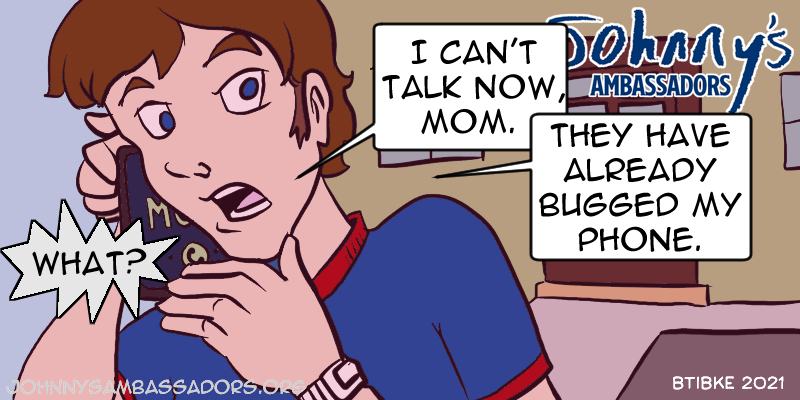How do you know if your child is acting like a normal teenager or if you’re seeing cannabis use? Here are ten true-or-false statements covering the most likely tip-offs that your teen is using marijuana.

1. If my teen used marijuana, I’d be able to smell it.
FALSE – While smoked marijuana has a distinctive, skunky smell, vaped marijuana,[1] whether in oil or solid form, often has little or no smell. You won’t be able to smell it on your teen’s breath and clothes, and the vapors can easily dissipate in a well-ventilated place. Teens can use a “sploof,” which is a handmade filter made from a cardboard tube and a dryer sheet. A room deodorizer or incense can also effectively mask the smell of marijuana. Or, your teen may wear more perfume or cologne than normal.

2. My teen often has red, bloodshot eyes and uses eye drops frequently, which could indicate marijuana use.
TRUE – Marijuana users often have very bloodshot eyes because marijuana is a vasodilator.[2] It lowers your blood pressure which causes the capillaries in your eyes to relax and increases the blood flow to those vessels. To counter this effect, users often use eye drops specially formulated for redness which decreases the size of the capillaries in the eyes to make the bloodshot appearance go away. If you note your teen using a lot of eye drops for no apparent reason or you find bottles of eye drops and don’t know why, he or she may be using marijuana.

3. My teen has suddenly changed his circle of friends, but this can’t signal possible marijuana use.
FALSE – Your teen suddenly changing a circle of friends may signal marijuana use. If his friends all use drugs or old friends who don’t do drugs no longer associate with your teen, that’s another red flag.

4. If my teen is vomiting a lot, it can be a sign of marijuana use.
TRUE – Marijuana toxicity[3] is unexplained nausea and vomiting, increased blood pressure, fast heartbeat, anxiety, panic, paranoia, hallucinations, delusions, and extreme confusion. If your child is vomiting frequently and taking a lot of hot showers, it may be a sign of cannabis hyperemesis syndrome[4] and requires medical treatment. A teen user may also act giddy or “out of it” for no obvious reason or let personal hygiene go.

5. My teen is more lethargic and sleeping more than usual which could signal marijuana use.
TRUE – Marijuana is known to make users more lethargic. This may manifest as them no longer taking an interest in activities they once enjoyed. An abrupt change in behavior is a classic sign of drug use. If your child suddenly becomes overly tired,[5] combative, secretive, uncommunicative, or loses interest in once-favorite activities, then investigate further.

6. I found hollowed-out cigars and burned nails in my son’s backpack, which seems odd, but they can’t be related to marijuana use.
FALSE – Having paraphernalia[6] around the house (and possibly blaming a friend) is a sign of marijuana use. Those hollowed-out cigars you found in your kid’s backpacks are used for smoking pot. Users call them blunts.[7] They pack them with herb marijuana and smoke them like regular cigars. They contain a lot more marijuana than a joint and can be very potent. If your child has been hiding burned nails, they’re probably dabbing.[8] This highly dangerous form of marijuana use involves inhaling the smoke from burned high-THC concentrates like shatter, budder, and wax. Using nails to hold the marijuana and a lighter to burn it is a simple form of dabbing, though there are “rigs” and pens made specifically for dabbing.

7. If my teen’s grades have started to plunge, marijuana could be the cause.
TRUE – Teen marijuana users often lose interest in school[9] and may start to skip classes or whole days. It can take a lot of time to be involved in marijuana. They may also stop studying which is reflected in poor grades. Long term, it can lead to a permanent drop in IQ. Like my son Johnny, some users can still function well enough to get by. There are other factors that can cause a drop in academic performance, from emotional distress to physical and psychological problems, but definitely question marijuana use as well.

8. My teen seems to be anxious and depressed, but that’s just normal teen behavior, not a sign of marijuana use.
FALSE – Your teen may tell you he or she is using marijuana to “chill out” or as “medicine” for anxiety and depression. However, there’s solid scientific evidence that marijuana can cause or worsen these conditions. Marijuana use can definitely trigger depression,[10] and regular users have twice the normal risk[11] for developing it. It can also trigger anxiety[12] or heighten existing anxiety. Meanwhile, anxiety may increase between uses,[13] and anxiety attacks may occur while using.[14]

9. My teen is saying some strange things about his phone being bugged; this sudden paranoia can indicate marijuana use.
TRUE – Among other things, marijuana can cause psychosis,[15] paranoia,[16] schizophrenia,[17] and suicidal tendencies and thoughts.[18] If you notice any such behavior, investigate it further (or get immediate medical attention if suicidal intent is expressed) because it may be caused by marijuana use.

10. I’m not worried about my daughter because teen girls rarely use marijuana.
FALSE – Although it’s true that fewer females use marijuana than males, marijuana does not respect gender. Some argue females aren’t as comfortable with marijuana use as males or males are just more adventurous or more likely to do dangerous things. The truth is that according to the 2014[19] and 2018[20] National Surveys of Drug Use, those who had used in the last month and last year were, on average, 39-43% female. That’s not much of a minority; girls use marijuana almost as often as boys.
- “Vaping and Marijuana: What You Need to Know.” Partnership to End Addiction, May 2020, drugfree.org/article/vaping-and-marijuana-what-you-need-to-know/.
- Conkiln, Mark. “Why Does Marijuana Cause Red Eyes & What to Do About It.” THC Physicians, 14 Dec. 2020, thcphysicians.com/does-marijuana-cause-red-eyes/.
- “Is It Possible to ‘Overdose’ or Have a ‘Bad Reaction’ to Marijuana?” Centers for Disease Control and Prevention, 7 Mar. 2018, www.cdc.gov/marijuana/faqs/overdose-bad-reaction.html.
- Galli, Jonathan A., et al. “Cannabinoid hyperemesis syndrome.” Current Drug Abuse Reviews vol. 4,4 (2011): 241-9. DOI: 10.2174/1874473711104040241.
- Bob. “How to Tell Your Child Is Smoking Weed: Sober College.” Become a Drug & Alcohol Certified Addictions Counselor | Sober College, 16 Dec. 2019, sobercollege.com/addiction-blog/signs-your-child-is-smoking-pot/.
- Sison, Gerardo. “3 Signs Your Teen May Be Using Marijuana: Weed Addiction & Treatment.” American Addiction Centers, 14 Oct. 2019, americanaddictioncenters.org/marijuana-rehab/signs-of-marijuana-use-in-teens.
- Santos-Longhurst, Adrienne. “Blunts, Spliffs, and Joints: What to Know Before You Roll Up.” Healthline.com, 21 Oct. 2019, www.healthline.com/health/what-is-a-blunt.
- Driscoll Jorgensen, Elizabeth. “Dabs, Wax, Vaping Weed, Edibles and the Real Impact of High Potency THC Products: What Parents Need to Know.” Resources To Recover, 15 Oct. 2019, www.rtor.org/2019/09/16/dabs-wax-vaping-weed-edibles-what-parents-need-to-know/?fbclid=IwAR1FfZqV2R6dFLEvlFfAJGvdGtuaBwrYJQpB1D3Whtc4BkobMSWWnZ3EnTI.
- Bob. “How to Tell Your Child Is Smoking Weed: Sober College.” Become a Drug & Alcohol Certified Addictions Counselor | Sober College, 16 Dec. 2019, sobercollege.com/addiction-blog/signs-your-child-is-smoking-pot/.
- Volkow, Nora, et al. “Adverse Health Effects of Marijuana Use.” New England Journal of Medicine, vol. 370, no. 23, 11 Apr. 2016, pp. 2219-2227., DOI: 10.1056/NEJMra1402309.
- Agrawal, Arpana, et al. “Major depressive disorder, suicidal thoughts and behaviours, and cannabis involvement in discordant twins: a retrospective cohort study.” The Lancet. Psychiatry vol. 4,9 (2017): 706-714. DOI: 10.1016/S2215-0366(17)30280-8.
- Gates, Dr. Peter. “Does Cannabis Cause Mental Illness?” NDARC, ndarc.med.unsw.edu.au/blog/does-Cannabis-cause-mental-illness.
- Budney, Alan J., et al. “The time course and significance of cannabis withdrawal.” Journal of Abnormal Psychology, vol. 112,3 (2003): 393-402. DOI: 10.1037/0021-843x.112.3.393.
- Hayatbakhsh, Mohammad R., et al. “Cannabis and anxiety and depression in young adults: a large prospective study.” Journal of the American Academy of Child and Adolescent Psychiatry, vol. 46,3 (2007): 408-417. DOI: 10.1097/chi.0b013e31802dc54d.
- Thomas, Huw. “A Community Survey of Adverse Effects of Cannabis Use.” Science Direct, vol. 42, no. 3, Nov. 1996, pp. 201-207., DOI: https://doi.org/10.1016/S0376-8716(96)01277-X.
- Andreasson, Sven, et al. “CANNABIS AND SCHIZOPHRENIA A Longitudinal Study of Swedish Conscripts,” vol. 330, no. 8574, 26 Dec. 1987, pp. 1483-1486.,DOI: https://doi.org/10.1016/S0140-6736(87)92620-1.
- Price, Ceri, et al. “Cannabis and suicide: longitudinal study.” The British Journal of Psychiatry: the Journal of Mental Science, vol. 195,6 (2009): 492-7. DOI: 10.1192/bjp.bp.109.065227.
- www.samhsa.gov/data/sites/default/files/NSDUH-DetTabs2014/NSDUH-DetTabs2014.pdf.
- Tice, Peter. “RESULTS FROM THE 2014 NATIONAL SURVEY ON DRUG USE AND HEALTH: DETAILED TABLES.” www.samhsa.gov, 10 Sept. 2015, pp. 1-2404.
- “Results from the 2018 National Survey on Drug Use and Health: Detailed Tables.” www.samhsa.gov, 2019, www.samhsa.gov/data/sites/default/files/cbhsq-reports/NSDUHDetailedTabs2018R2/NSDUHDetTabsSect1pe2018.htm.

